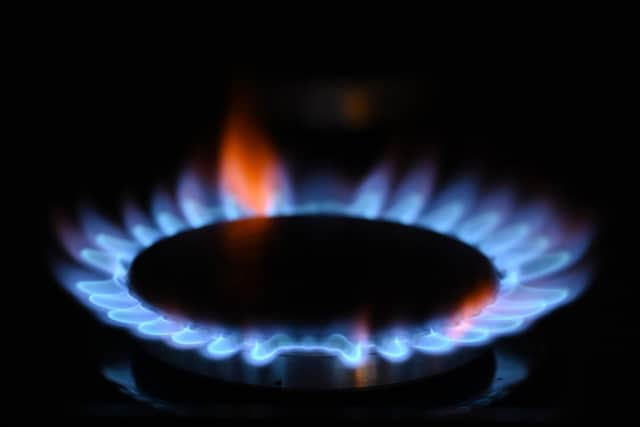Cost of living crisis: these Greater Manchester areas will be hit hardest by rising gas and electricity bills
and live on Freeview channel 276
On 1 April, energy bills are set to skyrocket for homeowners in Greater Manchester and across England.
The energy price cap rise of 54% means almost £700 will be added onto bills on average, but official government data shows some neighbourhoods in the city-region could be hit harder than others.
Advertisement
Hide AdAdvertisement
Hide AdThat’s because properties with low energy efficiency ratings generally have higher bills than homes with high energy efficiency ratings.
We’ve taken a local look at data analysed by our sister title NationalWorld to see which areas of Greater Manchester’s 10 borough have the largest numbers of homes with poor energy ratings.


How does the data work?
The energy efficiency of homes is assessed when they are built, sold or let.
They are given Energy Performance Certificates (EPCs) which reveal how much energy a property will use, how environmentally friendly the property is and importantly, how much energy bills will cost.
Advertisement
Hide AdAdvertisement
Hide AdHomes are rated from A, the most energy efficient with the lowest running costs, to G, the least efficient with the highest running costs.
We’ve taken a look at which neighbourhoods across Greater Manchester have the greatest proportion of homes with energy efficiency ratings of D or lower, according to data from the Department for Levelling Up, Housing and Communities.
The figures do not reflect all homes in the area because not every dwelling has an EPC. The statistics are based on estimates for the 2020/21 financial year.
What does the data show for Greater Manchester?
In Manchester the least energy-efficient neighbourhood was Levenshulme North, where almost three quarters of properties with an EPC (74.6% to be exact) had a ratings of D or lower.
Advertisement
Hide AdAdvertisement
Hide AdIn Chorlton North and Levenshulme Central the figure was 73%, while it was 71.7% in Chorlton South.
In Bolton residents in Lostock and Ladybridge will want to be checking the insulation on their homes as almost four in five (79.9%) had a poor EPC, followed by Smithills where it was 78.7%.
The rates were even higher in Bury where six neighbourhoods had rates of over 80% of homes having an EPC of D or worse.


Top of the unwanted league table was Sedgley Park, where 83.9% of homes with an EPC had poor energy efficiency.
Advertisement
Hide AdAdvertisement
Hide AdIn Oldham Salem had 84.6% of properties with EPCs of category D or worse, followed by Failsworth South where the rate was 82.1%.
Springfield Park was the neighbourhood of Rochdale with most inefficient homes, with 77.4% in band D or lower.
Salford’s worst-performing area was Lightoaks where 77.3% of homes had an EPC of D or worse.
Residents in Stockport, meanwhile, will also want to check out insulation if they are to avoid spiralling energy bills this year, as no fewer than seven neighbourhoods in the borough had more than 80% of their homes with EPCs in band D or lower.
Advertisement
Hide AdAdvertisement
Hide AdThe most inefficient homes were in High Lane, where 87.1% had a poor EPC in the lowest four bands.
In Tameside the fewest efficient homes were in Droylsden West, where 81.8% were in band D or worse.
In Trafford it was Urmston West, with 85% of homes having an EPC in band D or lower.
And in Wigan, Ashton-in-Makerfield West had the most inefficient homes, with 78.5% in the lowest four bands of the EPC.
Comment Guidelines
National World encourages reader discussion on our stories. User feedback, insights and back-and-forth exchanges add a rich layer of context to reporting. Please review our Community Guidelines before commenting.
